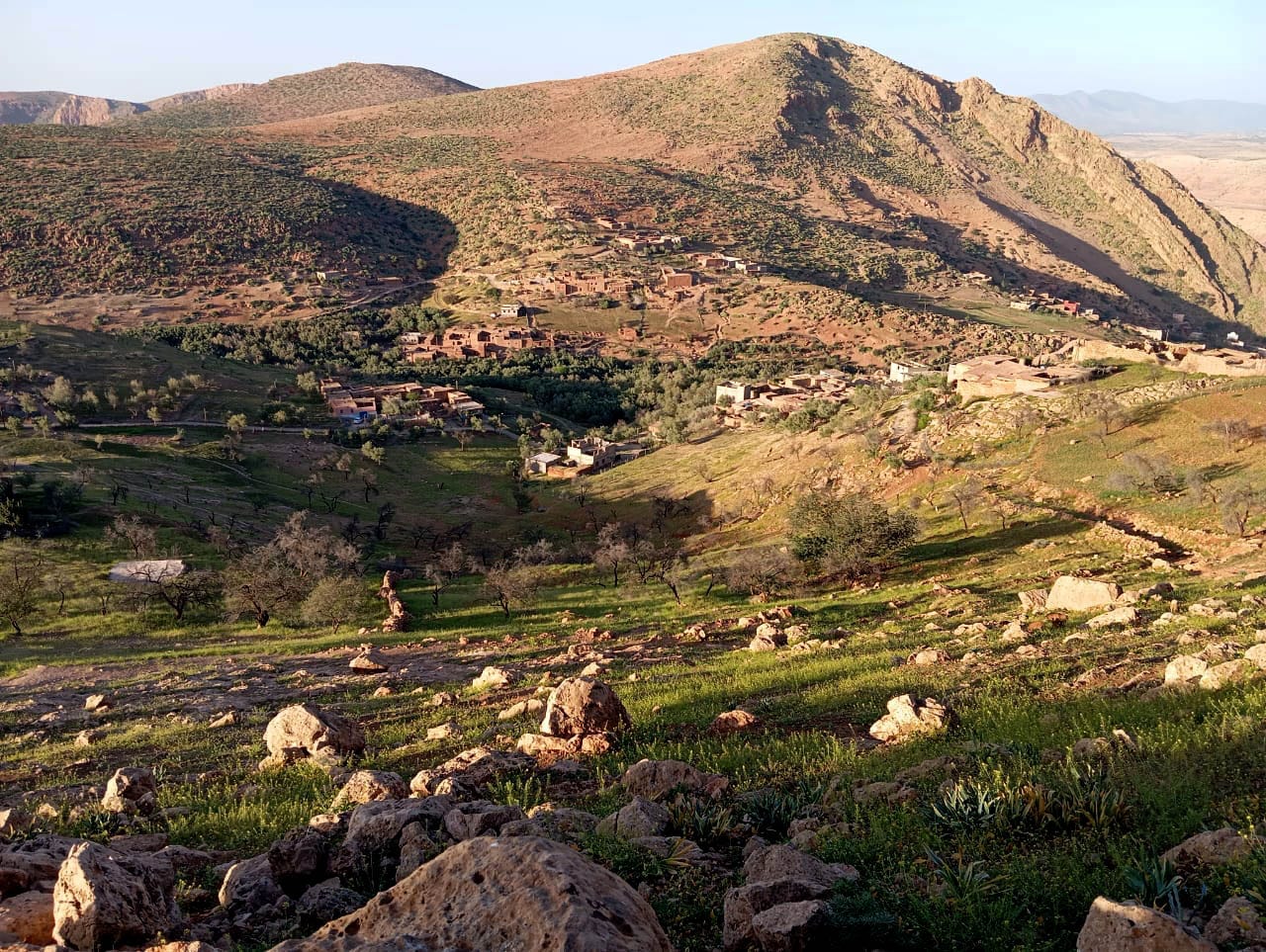Drought, and the neighbours who can’t get along
Severe drought brought a Moroccan farming village to its knees, but unresolved conflict is its most existential threat.
Salah Mahfoudh in Tiazite
Fattuma Al-Ma’ti sits on her porch in Tiazite village, central Morocco, tracing patterns on the hem of her dress. Gazing at mountains that have been her home for almost a century, the 90-yearold recalls the most difficult time her community has ever faced: the year of hunger.
In 1944, drought hit Tiazite and continued for three years. Her home, just a three-hour drive northeast of the Ouzoud Waterfalls, became a barren expanse of despair. The springs dried up, the oak and carob trees withered, family grain reserves were nearly depleted, and livestock perished one by one.
“We had no choice but to leave,” Al-Ma’ti says. The villagers migrated southeast to desert oases where water and gardens still promised life. For two years, they could not return to the mountains.
Upon their return to Tiazite, Al-Ma’ti says her community was determined to never face such hardship again. But today, she fears history is repeating itself. For more than five years, Morocco has grappled with another severe and long drought. It dried up Tiazite’s natural spring and triggered panicked responses that have divided the village, to the point of paralysis.
Lessons of the past unlearned
Because of the drought, for more than five seasons, the village hardly harvested any barley, olives, or almonds, the main crops cultivated there. Yet, a new well dug by the local municipality six months ago remains unused due to disputes on how to share its water.
Some members of the village want the water reserved for personal use only but the area is home to large almond and olive orchards that need it too, and are very important to the local economy and nutritional needs.
Many of these orchards date back to when Al-Ma’ti and her contemporaries returned to the land after the 1940s drought. Desperate to avoid a repeat of their ordeal, the villagers chose to “live with the land not against it” as Al-Ma’ti puts it. They replaced livestock with olive and almond trees, and imposed stiff fines for animals that trampled gardens.
In time, plant-based agriculture became the area’s mainstay. To share the water resources, each family was allocated a share of water from the village spring using a unit of measurement based on a day and night cycle.
But that system appears to have been discarded, along with the natural spring it was based on, which has run dry. The problem is: the community has failed to reach an agreement on a new system.
“The community must establish an association to oversee the daily management of water distribution,” says Abdelmajid Tamzoura, head of the Beni Hassan family in the area. But others want an existing village association, Tiazite Charity Association, to manage the well.
Saleh Ben Kroom, the treasurer of the association, which was set up in 2015, says it already has the financial and administrative capabilities to manage this facility.
Underpinning the deadlock are old grievances. While the old rules of water sharing were universally applied and effective when the natural spring run, their limitations were not always accepted happily, especially during difficult times.
“Some grudges arose,” says Ben Kroom. “These grudges did not die with the grandparents’ generation; instead, they were inherited by successive generations.”
Those that didn’t suffer those rules gladly would prefer to negotiate new ones starting with a blank slate, and those that liked them see that as an attempt to “impede the preservation of the village’s natural responses”, as Ben Kroom puts it.
As the deadlock lingers, the impact of inadequate water intensifies. With their own olive, almond and barley harvests still throttled, Karam says, families now rely on flour subsidies from the government.
And some residents are improvising, often in costly and ineffective ways, by extracting water elsewhere.
In this arid, harsh environment, the survival of Tiazite depends not only on the availability of water but on the ability of its residents to work together, overcome differences and embrace their shared heritage.





